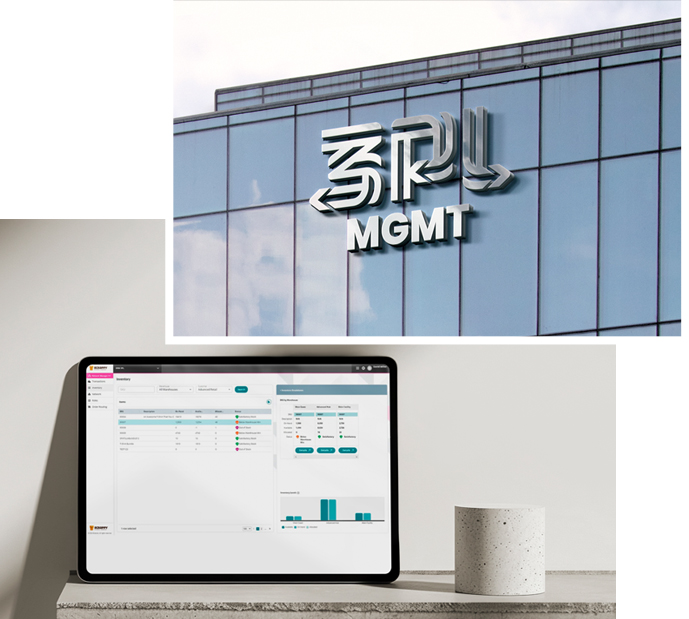Improving Shipping Times for Apparel Brands: Strategies for Faster Delivery
Are you struggling to meet customer expectations for quick delivery?
Many fashion retailers face challenges in streamlining their supply chain and improving order processing speeds.
However, fast shipping times are paramount for maintaining customer satisfaction.
According to a survey by Voxware, 69% of consumers are less inclined to shop with a retailer if an item isn’t delivered within two days of the promised date.
Additionally, 86% of shoppers have even greater expectations for delivery times during the holiday shopping season.
The good news is that there are strategies you can implement to boost your shipping efficiency and protect your customer satisfaction rates.
Let’s explore how partnering with a 4PL provider can revolutionize your logistics operations.
By putting these strategies into action, you’ll be well on your way to faster delivery times and happier customers.
Transform Your Supply Chain with Scrappy Apparel

Analyze Current Shipping Bottlenecks
To improve your shipping times, you need to start by identifying the bottlenecks in your current processes.
This analysis will help you pinpoint areas for improvement and develop targeted strategies to enhance your apparel fulfillment operations.
Identify Slow Points in Fulfillment
To streamline your fulfillment process, you need to focus on slow-moving inventory. This refers to products that have been in stock for an extended period without selling.
These items not only take up valuable warehouse space but also lead to rising inventory costs. They tie up capital that could be used more productively.
To address this issue:
- Monitor how long items have been in inventory, focusing on those exceeding the typical sales cycle for their category.
- Implement an inventory management system to track inventory movements and provide actionable insights.
- Calculate the inventory turnover ratio to identify slow-moving items by comparing the cost of goods sold to average inventory.
- Use accurate demand forecasting to align your stock with customer demand.
Assess Carrier Performance
Evaluating your carriers’ performance is crucial for improving shipping times. By tracking key metrics, you can identify areas for improvement and make informed decisions about your shipping partners.
Key performance indicators to monitor include:
- On-time performance (OTP): This metric is based on service level agreements (SLAs) and categorizes shipments according to delivery time. 95% or higher is considered a good OTP.
- Average transit time: This measures the actual number of days in transit for your shipments.
- Claim ratio: This percentage indicates the number of claims against a carrier compared to their overall shipments delivered.
To calculate these metrics:
- Define your time frame and criteria for on-time delivery.
- Use the formula: (Total On-Time Deliveries / Total Deliveries) x 100 to calculate OTP.
- Estimate transit times: Determine pickup and delivery locations, check carrier service maps, and consider delivery options.
- Calculate the claim ratio using: Total Claims / Total Shipments.
By reviewing these metrics, you can identify which carriers are performing well and which may be contributing to shipping delays.
This information will help you to optimize your carrier selection and improve overall shipping times for your apparel brand.
Improve Customer Communication
Communication is everything, especially when it comes to shipping delays. Customers want to know where their orders are at all times.
Here’s how you can give them peace of mind:
Proactive Shipping Updates
Many negative reviews result from delivery issues, especially in the fashion retail sector.
Did you know? 85% of shoppers seek out negative reviews to help them make informed buying choices, according to Neil Patel’s blog. This tendency is even more pronounced among younger consumers aged 18-29, with 91% of them doing so.
To address this, implement a system for proactive shipping updates. When delivery timelines change, promptly email customers to inform them of the delay and, if possible, provide a reason.
This transparency builds trust and reduces customer inquiries about order status.
Clear Delivery Expectations
Customers want clarity on shipping costs, delivery times, and return policies.
In fact, 45% of consumers emphasize the importance of clearly anticipated delivery times.
To meet this expectation, display accurate estimated delivery dates at checkout. This practice can nearly eliminate “Where Is My Order” (WISMO) requests, saving your customer service team valuable time.
Offer a variety of shipping options. 66% of consumers have chosen one retailer over another due to more delivery choices.
Easy Returns Process
An easy returns process is essential for customer retention.
According to the 2021 Narvar Benchmarks Report, 76% of first-time customers who had an “easy” or “very easy” returns experience would shop with the retailer again.
However, 33% of repeat customers would abandon a retailer after a “difficult” returns experience.
You always want to set clear expectations and create a seamless shopping experience that encourages customer loyalty and reduces returns.
Optimize Your Supply Chain
The faster your supply chain operates, the faster you can get your garments into customers’ hands.
Here are the key components you should focus on when optimizing your supply chain:
Build Partnerships with Strategically Placed 3PL Warehouses
Partnering with third-party logistics (3PL) providers can significantly optimize your supply chain.
3PLs offer flexible storage options with multiple warehouses in strategic locations, allowing you to optimize inventory storage based on demand and reduce shipping costs.
By leveraging their established infrastructure, you can expand your reach into new markets without significant capital investments.
Track Inventory Levels in Real-Time
Implementing real-time inventory tracking is crucial for efficient supply chain management.
With access to a fulfillment platform, you can monitor your inventory across all sales channels, preventing stockouts and excess inventory.
This visibility allows you to make informed decisions about restocking and helps streamline your overall supply chain by limiting waste and improving efficiency.
Distribute Inventory Based on Demand
To streamline your supply chain, it’s a good idea to distribute inventory based on demand.
Analyze past sales data to identify seasonal peaks and trends that affect demand. Use this information to inform your stocking decisions, ensuring you have enough garments when demand increases.
This proactive strategy helps you capitalize on popular items and avoid getting stuck with outdated stock.
Use a Multichannel Fulfillment Strategy
Adopting a multichannel fulfillment strategy can help you meet customer expectations across various sales channels.
You want to integrate inventory, orders, and fulfillment processes seamlessly across channels, including retail stores, your own website, and online marketplaces.
By implementing this strategy, you can provide a consistent customer experience and optimize your supply chain efficiency.
Outsource Fulfillment to a Specialized 4PL Partner
Partnering with a fourth-party logistics (4PL) provider can revolutionize your supply chain management.
A 4PL partner like Scrappy Apparel offers comprehensive supply chain oversight by serving as a single point of contact for all stages of the apparel production process. This includes sourcing raw materials, managing manufacturing, and overseeing warehousing and fulfillment operations.
By integrating these functions, Scrappy ensures consistent quality and efficient operations, eliminating the need for managing multiple vendors. Our scalable solutions allow brands to grow without sacrificing quality, providing reliable manufacturing and timely delivery through an extensive logistics network.
With Scrappy, you can eliminate operational headaches and cut costs on bulk orders.
Streamline Your Supply Chain with 4PL by Scrappy
At Scrappy Apparel, we understand that optimizing the supply chain is crucial for success in the apparel industry.
By partnering with us, a leading 4PL provider, you can streamline your operations and stay ahead of the competition.
Companies with top-performing supply chains experience 79% higher-than-average revenue growth in their industries, according to data from Invesp.
Our solutions go beyond traditional logistics. With our manufacturing background (and 18+ years of experience doing it), we provide specialized printing techniques and private labeling options.
We also specialize in multichannel fulfillment to a variety of final destinations. Check out our fulfillment programs below:

About Scrappy’s 3PL MGMT Program
3PL MGMT is our e-commerce focused fulfillment solution, designed specifically for the apparel industry.
Enjoy fast delivery times, reduced costs, and a seamlessly integrated supply chain, enhancing the overall experience for you and your customers.
Our fulfillment system integrates with major e-commerce platforms like Shopify and WooCommerce, allowing for automatic order processing and real-time inventory updates.
By choosing us as your partner, you’ll elevate your entire brand experience and become our next Scrappy Success Story.
Ready to transform your supply chain? Schedule a call with us today to discover how we can help you achieve your apparel goals.










